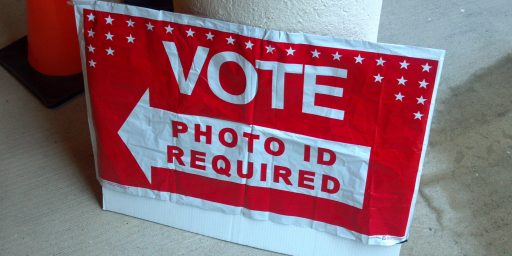Democrats Seek to Extend Discrimination Suit Deadlines
Several Democrats in Congress are trying to overturn a recent Supreme Court ruling on discrimination lawsuits.
In May, the Supreme Court ruled 5 to 4 against a supervisor at a Goodyear tire plant in Alabama who discovered, after working there for nearly 20 years, that her male colleagues, including those with less experience, had been receiving higher salaries. Most courts had ruled that each unfair paycheck was a new act of discrimination, effectively a new opportunity for an employee to sue. But the justices said that the clock started running out the first time a worker was paid unfairly and that therefore, the plaintiff, Lilly M. Ledbetter, had waited too long to file suit.
The main federal antidiscrimination law, Title VII of the Civil Rights Act of 1964, says that employees must make their charge of employment discrimination within 180 days after the alleged unlawful practice occurred.
Almost immediately after the Supreme Court ruled, several Democratic lawmakers promised to pass legislation to override the decision. Representative George Miller, Democrat of California and chairman of the Committee on Education and Labor, sponsored the House’s version of the bill, which the committee approved at the end of June and expects to send to the full House soon.
[…]
The House measure would direct a return to the interpretation of the civil rights law in which each unfair paycheck perpetuates discrimination. The measure would also apply to other forms of compensation like benefits.
Representative Howard P. McKeon of California, the senior Republican on the labor committee, said in a statement that he opposed the measure because it did not constitute “a minor tweak of labor law” but rather “guts the statute of limitations” by creating an open-ended timeline for employees to file suit.
Mark Kleiman thinks this is a perfect wedge issue, since “very few swing voters, and roughly none of the Democratic base, would need to think twice about the question whether someone who’s being underpaid now due to earlier adverse employment decisions made on the basis of race or sex ought to be able to get relief.” And yet “it looks as if the Republicans are going to kowtow to their paymasters and to the bigots in their voting base rather than trying to appeal to centrist voters.”
Nonsense.
The overwhelming majority of Republicans would agree that people who can show they have been unlawfully discriminated against should be made whole. The Supreme Court did not rule that, because Ledbetter found out too late about her lower pay that she simply had to endure future discrimination. She was entitled to sue for discrimination that occurred within 180 days of her filing suit and to seek appropriate remedies. What she was not entitled to do was reach back to the period before the statute of limitations and demand remedy.
The Court ruled, however, that Goodyear was not acting unlawfully during the 180 day period during which Ledbetter was eligible to sue. Rather, acts of discrimination decades early had put her at a pay disadvantage that was perpetuated by a percentage based annual pay re-evaluation system.
Ledbetter makes no claim that intentionally discriminatory conduct occurred during the charging period or that discriminatory decisions occurring before that period were not communicated to her. She argues simply that Goodyear’s nondiscriminatory conduct during the charging period gave present effect to discriminatory conduct outside of that period. But current effects alone cannot breathe life into prior, uncharged discrimination. Ledbetter should have filed an EEOC charge within 180 days after each allegedly discriminatory employment decision was made and communicated to her. Her attempt to shift forward the intent associated with prior discriminatory acts to the 1998 pay decision is unsound, for it would shift intent away from the act that consummated the discriminatory employment practice to a later act not performed with bias or discriminatory motive, imposing liability in the absence of the requisite intent. Her argument would also distort Title VII’s “integrated, multistep enforcement procedure.” The short EEOC filing deadline reflects Congress’ strong preference for the prompt resolution of employment discrimination allegations through voluntary conciliation and cooperation. Nothing in Title VII supports treating the intent element of Ledbetter’s disparate-treatment claim any differently from the employment practice element of the claim.
The intent of the present law is to encourage people to work out grievances quickly and amicably without going to court. Imagine that.
Furthermore, changing the law would have the pernicious unintended consequence of delaying settlement for harm caused. A company will surely be more likely to admit wrong, or simply settle, a dispute based on 180 days’ action, since the damages would be relatively small and fighting in court would be more expensive. If, on the other hand, five or ten years’ action is involved, the damages would be much higher and litigation would be more advantageous.




And if you don’t find out that you’ve been wrongly discriminated against within the 180 days, tough! Right?
It is a great wedge issue. There are consequences, sure, but as a political matter it’s a goody.
And the idea that companies are going to “work out grievances quickly and amicably” is more than naive. How many companies have ever admitted to this kind of discrimination without a court fight?
As for “changing the law would have the pernicious unintended consequence of delaying settlement for harm caused.” The plaintiffs most always want a speedy resolution. Companies are notorious for dragging this kind of thing out for as long as they can, hoping the plaintiff will simply quit from exhaustion. I think you’re pointing the finger in the wrong direction.
Not at all. Each paycheck that’s less than it should be for pernicious reasons begins the clock anew. All plaintiffs are denied is reaching back before then.
As a white male working for a fortune 500 company, I came to realize that I was being paid less than new hires. Was that discrimination? I changed to a different company which increased my pay substantially. After several years, I returned to the first company at an even higher rate.
Assume for a minute I was a member of a protected class. Would it have been that hard to do what I did? Is the country better off with individuals handling the problem as I did or with employing lawyers to sue the first company? I think this example is a good difference between expecting individuals to bear some of the responsibility vs people think of themselves as victims who must have a government solution.
All that being said, this is the proper way to work through the issue. The courts rightfully see the statue of limitations of the law has meaning. The congress doesn’t like the interpretation and proposes a change in the law. A public debate ensues and we collectively determine the right way to go.
Not at all. Each paycheck that’s less than it should be for pernicious reasons begins the clock anew. All plaintiffs are denied is reaching back before then.
This is exactly opposite to the holding of Ledbetter. JJ is actually describing the losing plaintiff’s argument.
It sounded to me like the court said the suit must be files within 180 days of the *original* discrimination, and that each pay check or wage increase that was less than equal because of that original discrimination does NOT reset the clock.
So you only have 180 days after the *original* discrimination to discover it and file suit, otherwise you have no recourse. Or am I reading the ruling wrong?
Anderson/Michael:
My reading of Alito’s opinion is that plaintiff’s have 180 days from an alleged act of discrimination to file. So, if protected class discrimination took place on Day 1 based on race and that discrimination had an effect on subsequent, non-discriminatory decisions, the clock runs out on the original discrimination on Day 181.
However, each annual pay evaluation (in this case) would trigger a new possible instance of discrimination. No suit could be filed to recover based on what went before but, if there is new discrimination, the fact that suit wasn’t filed within 180 days of the original discrimination wouldn’t preclude seeking redress for the new discrimination.
Or no?
That’s brilliant. As long as discrimination is sufficiently incremental there are effectively no consequences.
If so incremental that it’s not noticed within six months, there isn’t much harm either.
That’s certainly not true. Consider the example from the case the Supreme Court decided, a pay disparity. Since most employees at most businesses lack precise information about the salaries of other employees, it could be quite hard to know whether you’ve been wrongfully discriminated against; thus, it could take quite some time to ‘notice.’
I’m reading this differently, because of the intent prong required for a “discrete act” that gives action to a Title VII claim.
Alito doesn’t directly mention this point, but his reasoning here means that a separate intent is implicitly required for each act of discrimination. This would seem to preclude a new action from the mere failure to cure disparate salary levels on an “annual review” basis.
Compare this to an older case, Bazemore v. Friday:
Alito distinguished this:
In one breath, Alito posits that the difficulty of proving intent in stale cases requires swift action to resolve the claim, and in the next, ignores his own logic by castigating the discriminated-against plaintiff for failing to do exactly that with regard to the pay structure itself. Surely such a showing would require more than 180 days to make a case.
Tortured legal reasoning at its best.
Finally, Alito paves the way for Congress to act in his opinion:
If this is an unjust result, as many seem to think it is, then Congress is absolutely right to redraft the statute. Rather than “delaying settlement for harm caused,” this will allow redress when an undiscovered condition comes to light after the artificial 180 day window that the court has strictly construed for disparate pay cases. Congress can effect such a result quite easily by drafting a relatively narrow exception that allows for 180 days from discovery of the disparate treatment, which would have the effect of foreclosing plaintiffs who “wait” to get a bigger payoff while simultaneously allowing a good-faith plaintiff like Ledbetter to redress the actual harm she has suffered.
As others have pointed out, the Supremes have refuted JJ’s perfectly reasonable argument:
That, as I understand it, is the interpretation that has been used in the past and the one that the Dems in Congress want to reimpose.
I haven’t read the opinion. But this article in the May 30 NYT reflects my undrstanding of the ruling:
Emphasis mine.
From the May 30 article in the NYT Behind the paywall unfortunately.